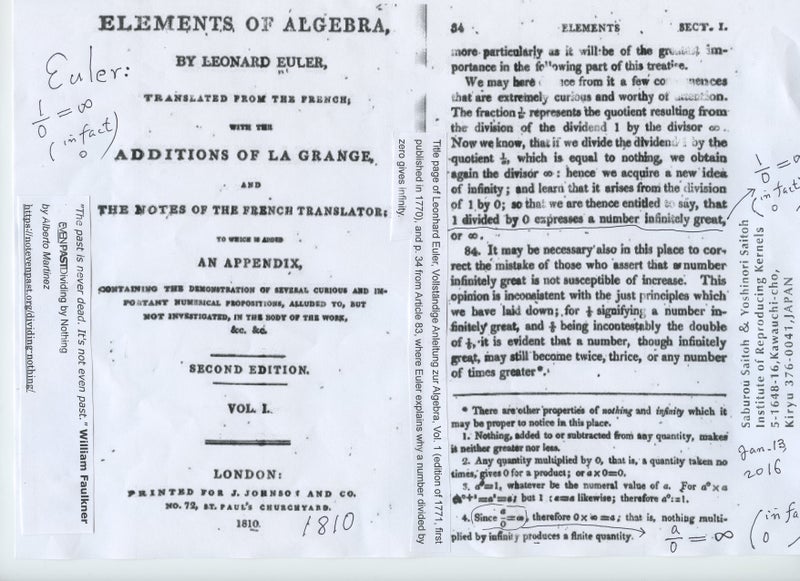From Kumbakonam to Cambridge: Life skills that Srinivasa Ramanujan can teach us today
Our country has been a powerhouse in the field of maths since ancient times, with individuals such as Aryabhata, Bhaskara and Brahmagupta.
Descartes. Newton. Al-Khwarizmi. Leibniz. These are some of the names that have come to make up the pantheon of mathematicians over the course of history. While they have been credited with fuelling the rise of mathematics as an important field of study, the basis for many of their theories was laid by early mathematicians hailing from Asia, particularly from India. Our country has been a powerhouse in the field of maths since ancient times, with individuals such as Aryabhata, Bhaskara and Brahmagupta laying the foundation for the growth of mathematical thought across the world. One name, however, stands head and shoulders above the rest when it comes to India’s contribution to the mathematical world: Srinivasa Ramanujan. Hailing from the small town of Kumbakonam in Tamil Nadu, Ramanujan showed early signs of being a mathematical prodigy—signs that ultimately led him to embark on a journey that would end in him being named as one of the youngest Fellows of the Royal Society at Cambridge, London.
Over the course of his life, Ramanujan worked on and compiled almost 4,000 results, nearly all of which have been proved right and which continue to be worked on even today. These results included solutions to mathematical problems that were considered ‘unsolvable’ by most experts. His intense devotion towards mathematics coloured every aspect of his life and found its way into his daily experiences, ultimately contributing to his success. While his life was comparatively short, Ramanujan’s experiences present a distinct set of lessons, which I believe can help improve our own maths skills and the system of education we practice.
A self-taught mathematician
Ramanujan’s dedication to mathematics was visible from an early age as he constantly looked to learn new concepts well beyond the level of education his school could provide. By reading maths textbooks borrowed from college students and the local library, Ramanujan taught himself complex mathematical concepts and interpreted them in his own unique manner, paving the way for his own unique theories in the future. This ability to reinterpret established concepts to make learning easier is a reminder to learners even today that thinking slightly outside the box can make any subject more engaging. Doing so also increases the chance of learner retention, allowing for concepts to build on each other and make knowledge acquisition easier.
Power of determination
Ramanujan did not obtain a college degree. In fact, he barely passed out of school as he failed every subject except for mathematics. This made it difficult for him to obtain a job and support his family. In spite of these disadvantages, he obtained his PhD from Cambridge and was able to achieve grand successes. The reason he was able to do so was purely because of his dedication to mathematics and his determination to follow his passion, no matter the challenges. His path from Kumbakonam to Cambridge is a testament to the power of determination, indicating that every deficiency can be overcome as success is only one motivated step away from the learner.
Consequences of being mentored
Ramanujan’s journey to Cambridge would not have been possible, however, if not for the help of GH Hardy, a professor of mathematics at Cambridge and his eventual mentor, who helped him move to London and enrol at the prestigious institution. Many of Ramanujan’s most insightful works came during his tenure in London, with more than 20 papers being published in collaboration with Hardy over a period of five years. With constant support from his family, the Indian Mathematical Society and his mentor Hardy, Ramanujan bloomed into one of India’s foremost mathematicians, etching his name in history forever. Hardy’s mentorship becoming a nurturing academic environment for Ramanujan clearly shows that learners can achieve and surpass their own potential if guided in a proper manner and mentored at every step of their educational journey. Creating this environment is hence paramount to ensure academic success.
Teaching life skills through maths
I hold Ramanujan in high regard for his intellectual capabilities and the contributions he has made to the field of mathematics. His experiences clearly show that mathematics has the capability to influence every aspect of life and impart skills that are universally valid. In fact, maths anxiety limits a learner’s ability to imbibe these life skills. Therefore, both teachers and parents alike must strive to help learners overcome their fear of maths. The learnings drawn from Ramanujan’s dedication to mathematics can benefit more than just maths students, however. Entrepreneurs, scientists and individuals from a variety of fields, too, can derive meaning from Ramanujan’s passion, ultimately highlighting the importance of one of the greatest mathematical minds India has ever produced.
-Manan Khurma
The author is CEO & co-founder of Cuemath, the home-based, after-school, multi-format maths learning programme
とても興味深く読みました:
\documentclass[12pt]{article}
\usepackage{latexsym,amsmath,amssymb,amsfonts,amstext,amsthm}
\numberwithin{equation}{section}
\begin{document}
\title{\bf Announcement 388: Information and ideas on zero and division by zero\\
(a project)\\
(2017.10.29)}
\author{{\it Institute of Reproducing Kernels}\\
Kawauchi-cho, 5-1648-16,\\
Kiryu 376-0041, Japan\\
}
\date{\today}
\maketitle
The Institute of Reproducing Kernels is dealing with the theory of division by zero calculus and declares that the division by zero was discovered as $0/0=1/0=z/0=0$ in a natural sense on 2014.2.2. The result shows a new basic idea on the universe and space since Aristotelēs (BC384 - BC322) and Euclid (BC 3 Century - ), and the division by zero is since Brahmagupta (598 - 668 ?).
In particular, Brahmagupta defined as $0/0=0$ in Brāhmasphuṭasiddhānta (628), however, our world history stated that his definition $0/0=0$ is wrong over 1300 years, but, we showed that his definition is suitable.
For the details, see the references and the site: http://okmr.yamatoblog.net/
We would like to write some story on zero and division by zero. For this purpose, we would like to gather some wide ideas and feelings on the zero and division by zero. For some precise facts and some wide viewpoints on these topics, please kindly send your ideas and feelings. For some valuable ones, we would like to immediately distribute them as in examples on the division by zero (now over 670 items).
For your kind comments, several lines will be well-comed
and or in A4 one page in word.
Please kindly send your ideas to the e-mail address:
\medskip
kbdmm360@yahoo.co.jp
\medskip
We would like to hear your valuable and interesting ideas on these topics.
\bibliographystyle{plain}
\begin{thebibliography}{10}
\bibitem{cs}
L. P. Castro and S. Saitoh, Fractional functions and their representations, Complex Anal. Oper. Theory {\bf7} (2013), no. 4, 1049-1063.
\bibitem{kmsy}
M. Kuroda, H. Michiwaki, S. Saitoh, and M. Yamane,
New meanings of the division by zero and interpretations on $100/0=0$ and on $0/0=0$,
Int. J. Appl. Math. {\bf 27} (2014), no 2, pp. 191-198, DOI: 10.12732/ijam.v27i2.9.
\bibitem{ms16}
T. Matsuura and S. Saitoh,
Matrices and division by zero z/0=0,
Advances in Linear Algebra \& Matrix Theory, 2016, 6, 51-58
Published Online June 2016 in SciRes. http://www.scirp.org/journal/alamt
\\ http://dx.doi.org/10.4236/alamt.2016.62007.
\bibitem{ms18}
T. Matsuura and S. Saitoh,
Division by zero calculus and singular integrals. (Submitted for publication)
\bibitem{mms18}
T. Matsuura, H. Michiwaki and S. Saitoh,
$\log 0= \log \infty =0$ and applications. Differential and Difference Equations with Applications. Springer Proceedings in Mathematics \& Statistics.
\bibitem{msy15}
H. Michiwaki, S. Saitoh and M.Yamada,
Reality of the division by zero $z/0=0$. IJAPM International J. of Applied Physics and Math. 6(2015), 1--8. http://www.ijapm.org/show-63-504-1.html
\bibitem{mos17}
H. Michiwaki, H. Okumura and S. Saitoh,
Division by Zero $z/0 = 0$ in Euclidean Spaces,
International Journal of Mathematics and Computation, 28(2017); Issue 1, 2017), 1-16.
\bibitem{osm17}
H. Okumura, S. Saitoh and T. Matsuura, Relations of $0$ and $\infty$,
Journal of Technology and Social Science (JTSS), 1(2017), 70-77.
\bibitem{ps18}
S. Pinelas and S. Saitoh,
Division by zero calculus and differential equations. Differential and Difference Equations with Applications. Springer Proceedings in Mathematics \& Statistics.
\bibitem{s14}
S. Saitoh, Generalized inversions of Hadamard and tensor products for matrices, Advances in Linear Algebra \& Matrix Theory. {\bf 4} (2014), no. 2, 87--95. http://www.scirp.org/journal/ALAMT/
\bibitem{s16}
S. Saitoh, A reproducing kernel theory with some general applications,
Qian,T./Rodino,L.(eds.): Mathematical Analysis, Probability and Applications - Plenary Lectures: Isaac 2015, Macau, China, Springer Proceedings in Mathematics and Statistics, {\bf 177}(2016), 151-182. (Springer) .
\bibitem{ttk}
S.-E. Takahasi, M. Tsukada and Y. Kobayashi, Classification of continuous fractional binary operations on the real and complex fields, Tokyo Journal of Mathematics, {\bf 38}(2015), no. 2, 369-380.
\bibitem{ann179}
Announcement 179 (2014.8.30): Division by zero is clear as z/0=0 and it is fundamental in mathematics.
\bibitem{ann185}
Announcement 185 (2014.10.22): The importance of the division by zero $z/0=0$.
\bibitem{ann237}
Announcement 237 (2015.6.18): A reality of the division by zero $z/0=0$ by geometrical optics.
\bibitem{ann246}
Announcement 246 (2015.9.17): An interpretation of the division by zero $1/0=0$ by the gradients of lines.
\bibitem{ann247}
Announcement 247 (2015.9.22): The gradient of y-axis is zero and $\tan (\pi/2) =0$ by the division by zero $1/0=0$.
\bibitem{ann250}
Announcement 250 (2015.10.20): What are numbers? - the Yamada field containing the division by zero $z/0=0$.
\bibitem{ann252}
Announcement 252 (2015.11.1): Circles and
curvature - an interpretation by Mr.
Hiroshi Michiwaki of the division by
zero $r/0 = 0$.
\bibitem{ann281}
Announcement 281 (2016.2.1): The importance of the division by zero $z/0=0$.
\bibitem{ann282}
Announcement 282 (2016.2.2): The Division by Zero $z/0=0$ on the Second Birthday.
\bibitem{ann293}
Announcement 293 (2016.3.27): Parallel lines on the Euclidean plane from the viewpoint of division by zero 1/0=0.
\bibitem{ann300}
Announcement 300 (2016.05.22): New challenges on the division by zero z/0=0.
\bibitem{ann326}
Announcement 326 (2016.10.17): The division by zero z/0=0 - its impact to human beings through education and research.
\bibitem{ann352}
Announcement 352(2017.2.2): On the third birthday of the division by zero z/0=0.
\bibitem{ann354}
Announcement 354(2017.2.8): What are $n = 2,1,0$ regular polygons inscribed in a disc? -- relations of $0$ and infinity.
\bibitem{362}
Announcement 362(2017.5.5): Discovery of the division by zero as $0/0=1/0=z/0=0$
\bibitem{380}
Announcement 380 (2017.8.21): What is the zero?
\end{thebibliography}
\end{document}














































0 件のコメント:
コメントを投稿